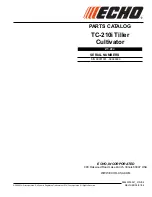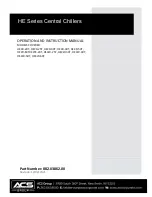
7
2.2 - Moving and siting the unit
2.2.1 - Moving
See chapter "Installation safety considerations"
2.2.2 - Siting the unit
Always refer to the chapter "Dimensions and clearances" to
confirm that there is adequate space for all connections and
service operations. For the centre of gravity coordinates, the
position of the unit mounting holes, and the weight distribu-
tion points, refer to the certified dimensional drawing supplied
with the unit.
CAUTION: Only use slings at the designated lifting points
which are marked on the unit.
Before siting the unit check that:
•
the permitted loading at the site is adequate or that
appropriate strenghtening measures have been taken.
•
the surface is horizontal, flat and intact.
•
there is adequate space above the unit for air flow.
•
there are adequate support points and that they are in the
right places.
•
the location is not subject to flooding.
•
where heavy snowfall is likely and long periods of sub-
zero temperatures are normal, provision has been made to
prevent snow accumulating by raising the unit above the
height of drifts normally experienced.
Baffles may be necessary to deflect strong winds and to
prevent snow from blowing directly into the unit. They
must not restrict air flow into the unit.
CAUTION: Before lifting the unit, check that all casing
panels are securely fixed in place. Lift and set down the unit
with great care. Tilting and jarring can damage the unit and
impair unit operation.
The 30RA units can be hoisted with rigging. Coils should
always be protected against crushing while a unit is being
moved. Use struts or spreader bars to spread the slings above
the unit. Do not tilt a unit more than 15°.
WARNING: Never push or lever on any of the enclosure
panels of the unit. Only the base of the unit frame is designed
to withstand such stresses.
2 - PRELIMINARY CHECKS
2.1 - Check equipment received
•
Inspect the unit for damage or missing parts. If damage is
detected, or if shipment is incomplete, immediately file a
claim with the shipping company.
•
Confirm that the unit received is the one ordered.
Compare the name plate data with the order.
•
The unit name plate must include the following
information:
-
Version number
-
Model number
-
CE marking
-
Serial number
-
Year of manufacture and test date
-
Refrigerant used and refrigerant class
-
Refrigerant charge per circuit
-
Containment fluid to be used
-
PS: Min./max. allowable pressure (high and low
pressure side)
-
TS: Min./max. allowable temperature (high and low
pressure side)
-
Globe valve cut-out pressure
-
Pressure switch cut-out pressure
-
Unit leak test pressure
-
Voltage, frequency, number of phases
-
Maximum current drawn
-
Maximum power input
-
Unit net weight
High pressure
Low pressure
Min.
Max.
Min.
Max.
PS (bar)
-0.9
32
-0.9
25
TS (°C)
-20
72
-20
62
Pressure switch cut-out pressure (bar)
29
-
Valve cut-out pressure (bar)
32
25
Test pressure, unit leak test (bar)
15
•
Confirm that all accessories ordered for on-site installation
have been delivered, and are complete and undamaged.
•
The unit must be checked periodically during its whole
operating life to ensure that no shocks (handling
accessories, tools etc.) have damaged it. If necessary, the
damaged parts must be repaired or replaced. See also
chapter “Maintenance”.
Summary of Contents for 30RA040B
Page 35: ...35...








































